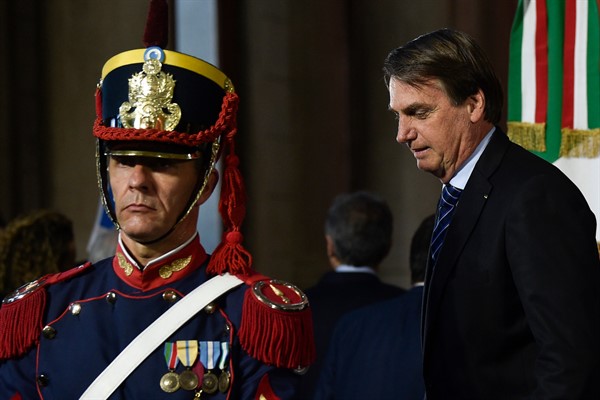Relations between the four members of South America’s Mercosur trade bloc—Argentina, Brazil, Paraguay and Uruguay—are at their worst since the group’s establishment three decades ago. For months now, Argentine President Alberto Fernandez has been blocking a demand by Brazil and Uruguay to reduce Mercosur’s external common tariffs, in an attempt to protect domestic companies and prevent even further disruption to an economy mired in high inflation, currency problems and a prolonged recession. Frustrated, Uruguayan President Luis Lacalle Pou announced earlier this month that he would seek trade deals outside of Mercosur, which is prohibited by the bloc’s rules.
Uruguay’s decision is not irrevocable, and it doesn’t pose an immediate risk to Mercosur. However, it does highlight the bloc’s internal divisions and contradictions, which are becoming unsustainable. Originally envisioned to help reconcile former rivals Argentina and Brazil, Mercosur’s first decade was a resounding success; relations among members improved markedly, and trade among them boomed.
After that, however, the bloc stagnated. It has still not met the ambitions of its founders, being neither a free trade area—since some internal tariffs remain among members—nor a platform to integrate with the world. In 30 years, it has only signed free trade agreements with Egypt and Israel. Further, Mercosur’s founding treaty imposes a straightjacket on its members: All decisions must be made by consensus, and trade negotiations with third parties have to take place as a bloc, not bilaterally.

